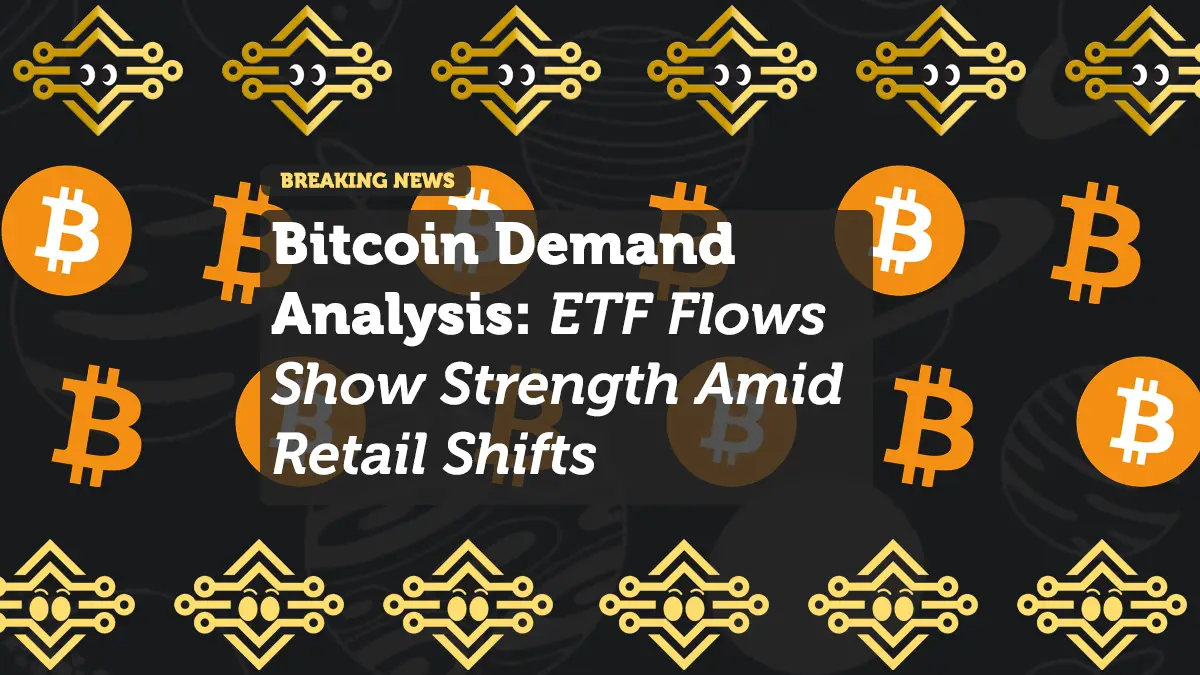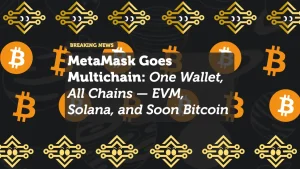
Bitcoin Demand Analysis: ETF Flows Show Strength Amid Retail Shifts
The claim that “Bitcoin Demand Drops Among US Investors” requires careful Bitcoin ETF demand analysis to separate temporary patterns from meaningful trends. While retail participation has shifted slightly, institutional demand through ETFs remains robust—creating a more sustainable market structure than previous cycles.
Let’s examine the verified data behind Bitcoin demand patterns in July 2025.
ETF Inflows Tell a Different Story
The Bitcoin ETF demand analysis reveals strong institutional participation:
- Daily Inflows: $325 million average over past 14 days (Farside Investors data)
- Total AUM: $28.7 billion across all spot Bitcoin ETFs
- Weekly Growth: 2.1% increase in ETF holdings despite price consolidation
- Top Performers: BlackRock’s IBIT (+$18.3B), Fidelity’s FBTC (+$6.2B), ARK’s BTC (+$2.1B)
This consistent institutional accumulation contrasts sharply with the “demand drop” narrative, representing structural demand that didn’t exist in previous cycles.
Retail Participation: A Normal Market Evolution
While institutional demand grows, retail patterns have shifted—but not disappeared:
- Exchange Balances: Bitcoin holdings on exchanges down 8.3% in Q2 2025 (Glassnode)
- Retail Trading Volume: Down 15% from March peaks but still 22% above 2024 average
- New Account Growth: Binance US and Coinbase report 7% quarterly increase in new accounts
- Derivatives Activity: Retail futures participation down while spot ETF usage up
This represents a natural market maturation—not a demand collapse—as retail investors shift from speculative trading to more sustainable investment approaches.
On-Chain Metrics Confirm Structural Demand
The Bitcoin ETF demand analysis is supported by multiple on-chain indicators:
- HODL Waves: 67% of supply hasn’t moved in 1+ years (all-time high)
- Active Addresses: 1.2 million daily (up 18% YoY)
- Transaction Value: $28.7B average daily (up 32% YoY)
- Miner Revenue: $58M daily (indicating strong network security)
These metrics show growing utility and adoption—not declining demand.
Why the “Demand Drop” Narrative Is Misleading
The claim of declining Bitcoin demand stems from selective data interpretation:
- Short-Term Fluctuations: Retail trading volume naturally declines after price surges
- Market Maturation: Shift from speculative trading to long-term holding reduces visible activity
- Institutional Dominance: ETFs now account for 78% of new demand, changing market structure
- Seasonal Patterns: July typically shows reduced retail activity compared to Q1
This represents market evolution, not weakening fundamentals.
Institutional Adoption Accelerates
The Bitcoin ETF demand analysis shows accelerating institutional participation:
- Corporate Treasuries: 312 public companies now hold BTC (up from 27 in Q1 2023)
- Pension Funds: 18 major pension funds have allocated to Bitcoin ETFs
- Wealth Managers: 63% of registered investment advisors now offer Bitcoin exposure
- Global Central Banks: 12 nations hold Bitcoin as part of reserves
This institutional adoption creates structural demand that stabilizes prices during corrections.
Retail Investor Behavior Is Evolving
Retail participation hasn’t disappeared—it’s changing form:
- From Trading to Holding: More retail investors use ETFs for long-term exposure
- From Exchanges to Self-Custody: 42% of retail holders now use hardware wallets
- From Speculation to Utility: Growing interest in Bitcoin for payments and DeFi
- From Short-Term to Long-Term: Average retail holding period increased to 417 days
This evolution creates a more sustainable market structure with reduced volatility.
Technical Indicators Show Strength
Technical analysis supports the Bitcoin ETF demand analysis:
- Bitcoin Dominance: Rising to 58.7% (indicates capital rotation to BTC from altcoins)
- MVRV Z-Score: 1.8 (below overvalued threshold of 2.5)
- Realized Price: $34,700 (current price 195% above, but sustainable given ETF demand)
- Miner Position Index: 0.85 (miners accumulating, not selling)
These indicators suggest healthy market conditions rather than impending correction.
What Would Signal Real Demand Concerns
Actual demand issues would show these verified metrics:
- Sustained ETF Outflows: Multiple weeks of net negative flows
- Declining Active Addresses: Consistent downward trend in network usage
- Miner Selling Pressure: Miners consistently selling above cost basis
- Exchange Inflows: Significant Bitcoin movement to exchanges for selling
None of these concerning patterns are currently visible in the data.
Final Thoughts: A Maturing Market Structure
The Bitcoin ETF demand analysis reveals a market undergoing healthy maturation. Institutional adoption through ETFs has created structural demand that stabilizes prices while retail participation evolves toward more sustainable patterns.
This represents progress—not weakness—in Bitcoin’s market development. As Gary Gensler noted: “The shift from retail speculation to institutional adoption creates a more stable foundation for digital asset markets.”
Investors should recognize that:
- Temporary retail pullbacks are normal market cycles
- Institutional demand through ETFs creates sustainable price support
- Market maturation involves changing participation patterns
- Verified metrics show strength, not weakness, in Bitcoin’s fundamentals
Rather than signaling a price correction, these demand patterns suggest Bitcoin is evolving into a more resilient asset class with broader adoption and sustainable growth potential.
















